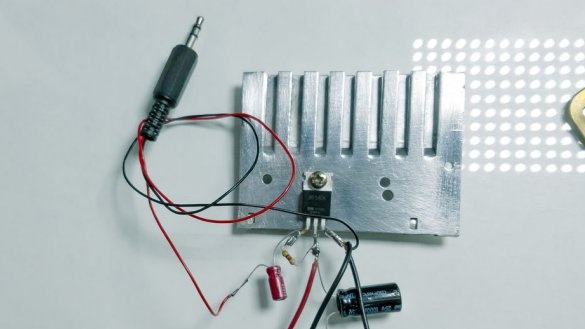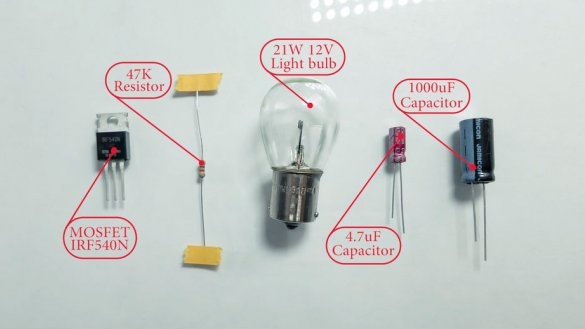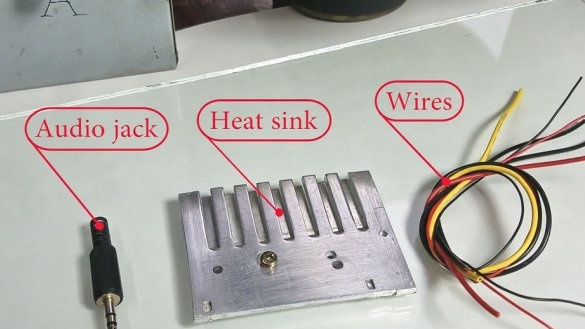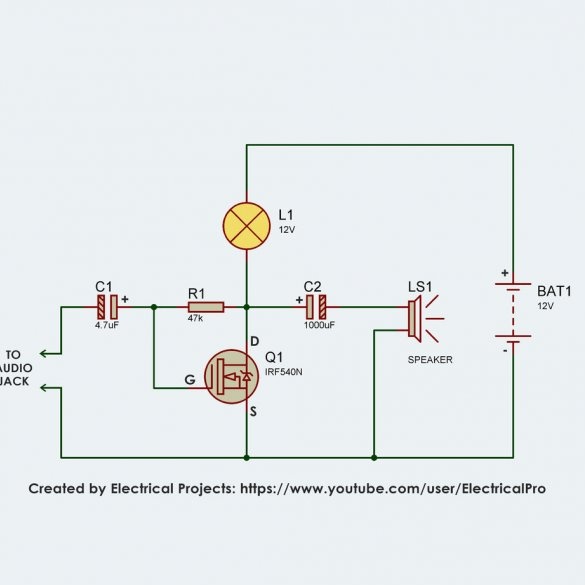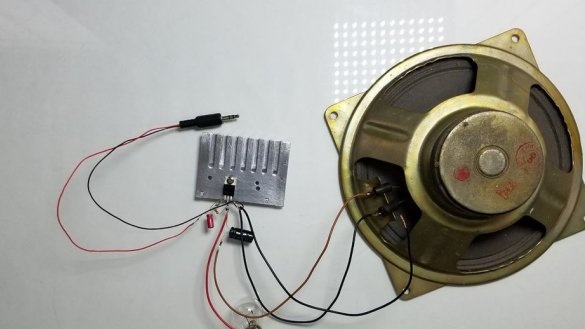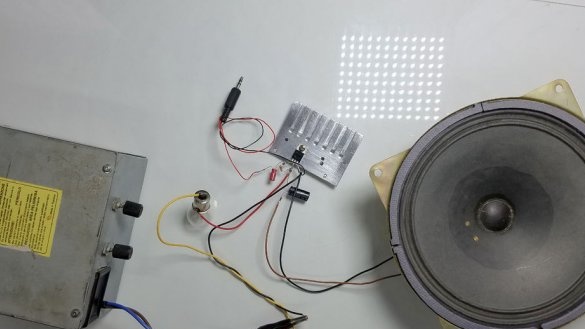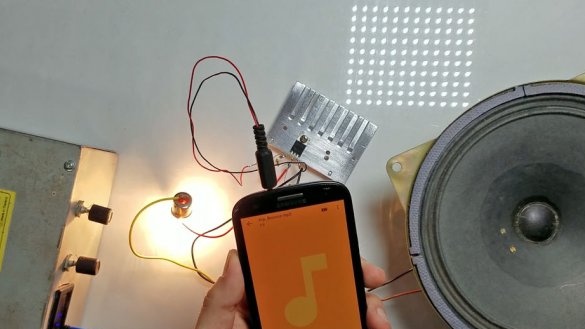And YouTube, and sites about homemade full descriptions of single-cycle single-transistor amplifiers. Usually the load of a single cascade there is the dynamic head itself, through which the constant component flows. It's not that very bad if the head power is enough, but still not everyone likes it. You can put the output transformer, or you can perform the output stage according to the preliminary scheme: load the transistor on the resistor, and bring the signal out through the capacitor. Only a rather powerful resistor will be needed, not at all the same as in the preliminary stages, but the author of Instructаbles and YouTube under the nickname ElectricalProjects figured out where to get one.
Here the master selects the details for the design. The main part of the amplifier is a powerful N-channel MOSFET type IRF540N or similar in characteristics. The first thing to do is to immediately install it on a large heat sink, and better through thermal grease - this is not class D. The amplifier will use a 12V and 21W incandescent lamp, it is sold in all auto parts stores. Not halogen, not LED, but the most common. This is due to her justify the title of the article. The bias at the gate of the transistor will create a normal 47 kOhm resistor. So that the bias voltage does not get into the signal source, or vice versa, the signal source does not remove this DC component voltage at its output, a 4.7 μF capacitor and at least 16 V are required. And so that the DC component does not fall into the dynamic head, you need a second capacitor - for the same voltage, but with a capacity of 1000 μF. Another same capacitor would be nice to connect in parallel with the power supply, but this is optional. The developer did not.
To power the amplifier, the author takes a power supply for a voltage of 12V and a current of at least 2 A. It is possible from a router, but not from every one, many of these PSUs have an allowable load current less.
By launching a graphical editor, the wizard draws an amplifier circuit. Guided by it, he observes the polarity of the connection of capacitors and a power source. And you, when you assemble the amplifier, follow. A capacitor connected in parallel with the power supply (not shown in the diagram), if you decide to install it, this also applies.
The same scheme, but embodied in iron, looks more interesting:
The master connects the power supply:
By turning on the power supply, he first of all additionally makes sure with the help of a voltmeter that there is no mention of any constant component at the input of the amplifier. And only then, knowing for sure that the signal does not threaten the signal source, it connects it:
If the signal source determines the presence of headphones / speakers by their resistance, its output must be bridged with a resistor of 50-100 Ohms. During the operation of the amplifier, the brightness of the light bulb almost does not change - it's not your color music, it's something close to class A. Audiophiles are better not to show it anyway - they will laugh, but you can quietly rejoice yourself that the penny design has something in common with their expensive toys - that same class.
Yes, the sound is far from audiophile, but it is at least loud. Like a trumpet on which one famous fairy-tale hero played, believing that the main thing is to be loud.
Following the author who did not, it would be good to cultivate the amplifier. Fasten everything so that nothing hangs, and the bulb does not touch anything. Place the dynamic head in the housing where it will sound better. And you can listen!
If you add a volume control to the amplifier input, do not forget that it is better to set the volume on the signal source lower, and on this control - more than to do the opposite to get the same overall volume. Then there will be less distortion.

